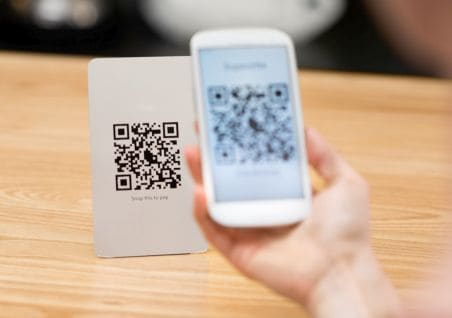- Cashless Bano India/
- Features/
- Conducting Workshops To Providing Tax Incentives, How The Government Is Encouraging Small Traders To Go Cashless
Conducting Workshops To Providing Tax Incentives, How The Government Is Encouraging Small Traders To Go Cashless

Highlights
- Small and medium traders make up for 45 per cent of India's GDP
- Phase 1 of go cashless awareness campaign targets 13,500 small traders
- Government has announced tax incentives for small traders
The government has undertaken several steps to bring small traders under the cashless ambit and ease conducting business.
A problem small traders encountered when going digital during the November-December 2016 phase post demonetisation was understanding how cashless transactions worked, what were Point of Sale (PoS) machines and how these are used and what were the advantages of shifting to a cashless model of business. To address these valid and valuable concerns, the National Institute of Electronics and Information Technology (NIELIT) has launched a nationwide campaign to teach small traders about the nuances and advantages of digital finance. 30 state workshops, and 100 Digi Dhan campaigns will be held across India to reach out to small traders and encourage them to go cashless. In its first phase, the campaign targets 13,500 small traders and is hopeful of ensuring their transition to the cashless model.
Small traders who have conducted transactions using cash all along might find the switch to digital modes slightly difficult initially. The workshops will help them understand the several ways digital transactions can be conducted and how it helps maintain transparency of transactions, said S. Srikanth, NIELIT.
One of the first campaigns to be held by NIELIT on cashless transactions was in Aurangabad, Maharashtra in May 2017, educating the traders about digital finance. The campaign included the 250 to 300 odd small traders of the city, educating them on the importance of digital transactions. NIELIT also provided significant resources during the campaign to help traders to get their cashless related queries answered. Queries regarding securing a PoS machine, its operation etc. were addressed by NIELIT personnel during the campaign.
The demand for PoS machines among small traders also saw a significant rise across India post November 2016. In West Bengal's Durgapur, the local nationalised and private banks received a total of 550 PoS machine applications in two months from small traders, signaling their intent to shift to cashless transactions. The Confederation of All India Traders (CAIT) which tracks such developments, in March 2017 said that being entirely cash dependent had hurt small traders tremendously post demonetisation as sales dropped by 60 to 70 per cent for many. Opting for PoS machines enabled them to cater to consumers who preferred paying via debit/credit cards.
Demonetisation resulted in many small traders incurring severe daily losses. To cope up with that, PoS machine applications in local banks increased nearly three-fold as traders did not want to fall behind. This is a good sign, as small traders will be gradually be able to match to the digital plan of the Centre and not be left behind, said Praveek Khandelwal, Secretary General, CAIT.
Apart from arranging for workshops and camps for small traders, the Union government has also announced a tax saving measure for small businesses if they go digital. The announcement, made by Finance Minister Arun Jaitley in March 2017, lowered the total turnover to be considered as chargeable income from 8 per cent to 6 per cent. This reduction would result tax savings of up to 40 per cent. To be eligible to avail this incentive, a small trader must conduct transactions via digital means only. This will also ensure that small traders have a completely clean record of transactions and can easily apply for loans or financial incentives. Small traders such as vegetable shop owners and kirana shop owners will benefit the most from this incentive as they will receive major tax savings.
The government's moves are encouraging for small traders, as many can now opt for cashless methods of payments and gain benefits from switching from cash based to cashless. NIELIT's role will also be very important, considering the large number of small traders in India and the amount of time and resources required to convince them of the benefits of a cashless system. But what is assured is that by bringing small traders towards a cashless system and encouraging them to opt for digital transactions, the government is determined to make a major economic sector of India independent of cash and thereby more transparent.
Also Read: Google Awaits RBI's Approval To Launch Its Digital Payment Service In India
About The Campaign

NDTV along with MasterCard is launching a multi-platform campaign “Cashless Bano India”, to create digital awareness and educate the masses about digital payment solutions for day to day transactions.
The campaign aims to take the message of a cash free India to the country, all while educating them on the ways and means to do it.
We aim to reach out to people and educate them on:
1). Digital and financial literacy
2). New generation digital payment solutions
3). Enabling merchants and consumers to understand and adopt secured and safe payment Solutions
4). Ease of usage at point of sales


